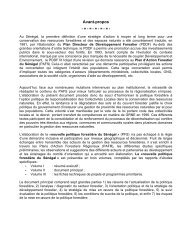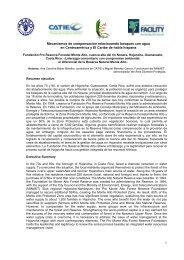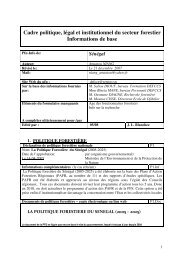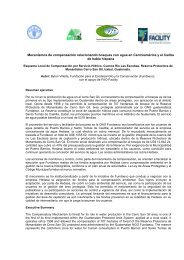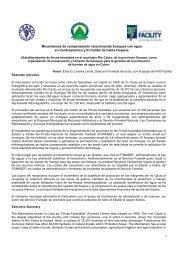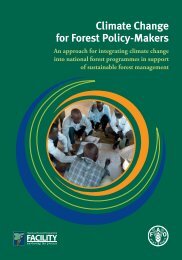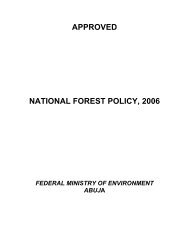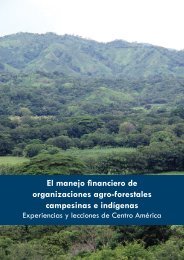2010 Progress Report â Draft - NFP Facility
2010 Progress Report â Draft - NFP Facility
2010 Progress Report â Draft - NFP Facility
You also want an ePaper? Increase the reach of your titles
YUMPU automatically turns print PDFs into web optimized ePapers that Google loves.
<strong>2010</strong> <strong>Progress</strong> <strong>Report</strong><strong>Facility</strong>ProgrammePurposeInterventionLogicStrengthening thenfp process in up to60 developingcountries (DC) inconformity withlocal needs,stakeholders’interests, nationalpriorities,internationallydefined criteria,and best possibleinformationObjectivelyVerifiable Indicators− Number ofimproved nfpprocesses− Nature of theimprovementsinitiated by <strong>Facility</strong>activities<strong>Report</strong>ing against Logical Framework− 70 <strong>Facility</strong> partner countries and 4 Partner Organisations (including the14 partner countries and 1 partner organisation which received a 2ndpartnerships)− in <strong>2010</strong>, there were 5 partners which organised a workshop to launchtheir 2nd Agreement (Pakistan could not do the launch its 2ndAgreement due to the security situation in the country)− A number of so called dormant countries (Burundi, Rwanda, Nepal)organised a workshop to give renewed stimulus to their nfp process; Inall countries with a 2nd Agreement, a participatory process hadalready taken place in order to draft the Concept Note− Nfp processes strengthened in all the Partner Countries; in some ofthese countries the nfp process has been initiated almost from scratch;the <strong>Facility</strong> has supported the 3 main nfp-principles, spread over the 4different phasesSources of Verification− National reports to UNFF− FAO periodic reports andassessments− <strong>Facility</strong> OIMES (RBM) system− Appendixes of the <strong>Facility</strong>Country Agreements− Development of an open and competitive process, guided by theNational Multi-stakeholder Steering Committee (NMSC), responsive tolocal needs and reflecting national priorities− Development of OIMES, the monitoring system of the nfp process(“nfp-matrix” followed by the creation of the Appendix, which is part ofthe <strong>Facility</strong> Country Agreement); the system can also be used as abasis for <strong>Facility</strong> impact monitoring and evaluationResults1. National capacityto implementeffective nfp’s isimproved,through activecivil societyparticipation inup to 60 DC− Number of DCswhere the <strong>Facility</strong>was active− Number of civilsocietyorganizationssupported with<strong>Facility</strong> grants− 70 Partner Countries, and 4 Partner Organisations; 14 partnercountries and 1 Partner Organisation entered into a 2nd Agreement− Approximately 500 non-state stakeholders (NGOs, CBOs, NationalInstitutions, Associations and decentralized forestry departments) wererecipients of small grants− Grants range from 5,000 US$ to (rather exceptional) 98,000 US$(average is 25,000 US$)− <strong>Facility</strong> OIMES Monitoringsystem− Proceedings and reportsfrom <strong>Facility</strong> fundedactivities (final reports freelyavailable on the web)− <strong>Facility</strong> website− Average volume ofgrants− Types and qualityof <strong>Facility</strong> fundedactivities− Capacity building, information gathering and sharing, special studies tosupport forest policies (for example, the impact of forestry on rurallivelihoods and GDP), development and adoption of new forestlegislation and dissemination of forest related laws and regulations,development of new fiscal policies, new concession systems, newmechanisms to fund forestry (payment for environmental services;paying for water), and enabling private investment in the forestrysector; decentralization in the forest sector, empowering localgovernments in forest management and institutional reorganization− <strong>Facility</strong> database42



